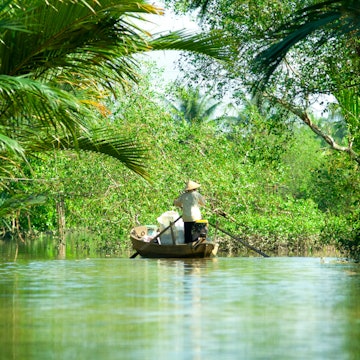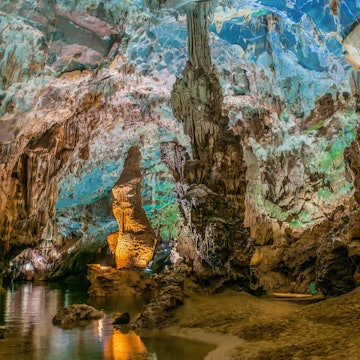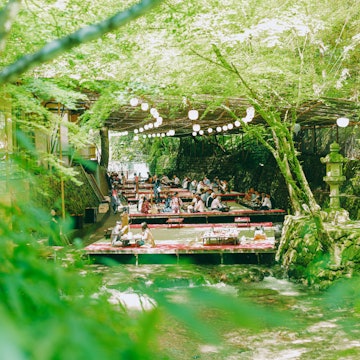
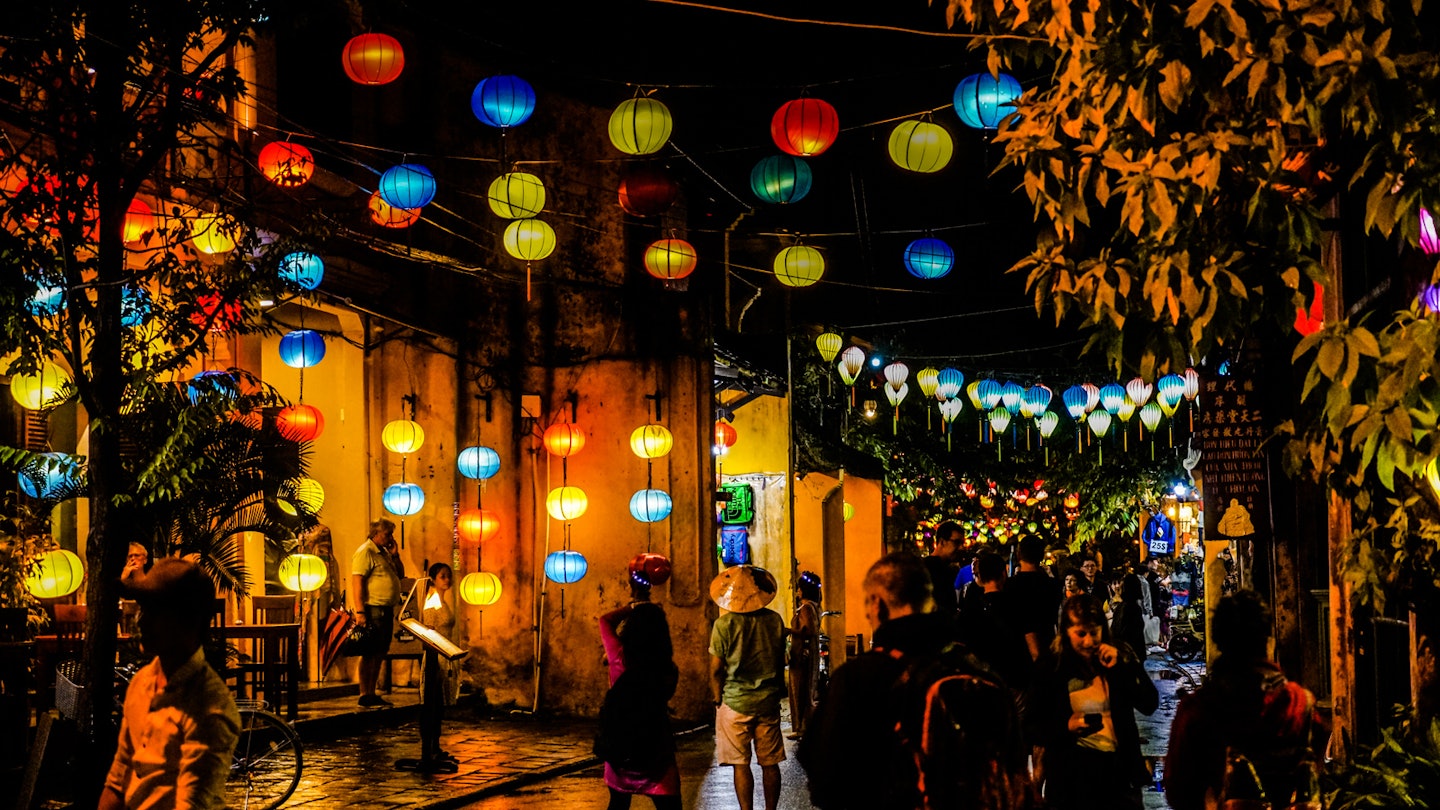
Hoi An's Ancient Town is lit by lanterns at night © James Pham / Lonely Planet
Visitors to Vietnam often cite charming Hoi An as one of their favourite cities. A thriving medieval port city that was reduced to a backwater country town by the late 18th century, Hoi An was more recently reborn as a Unesco-listed World Heritage Site for its well-preserved Old Town. Nowadays, up to five million people visit Hoi An annually, most spending a modest VND 120,000 for a ticket to see five of the town’s 22 heritage attractions or not-so-modest sums on getting tailor-made clothing and shoes at the town’s more than 300 tailor shops.
However, with its quaint, grid-like streets (pedestrian-only for much of the day) perfect for walking and its flat country roads ideal for cycling (bikes sometimes provided free by hotels), there are a handful of interesting things to see and do where you won’t even have to crack open your wallet.

Wander the Rue des Arts
Phan Boi Chau Street, just east of the Hoi An Market, is becoming a go-to destination for art lovers. In the space of a few blocks on this so-called Rue des Arts, you can find spectacular photographs of Hoi An and its people by French photographer Réhahn (in front of the Precious Heritage Museum). There are also Hoi An-inspired watercolours by UK artist Bridget March, and Art Space, a cafe displaying a selection of sculpture, photography and paintings.
Enjoy incredible sunset views from Cua Dai Bridge
Just near Cua Dai Beach, the nearly 1.5km-long Cua Dai Bridge spanning the Thu Bon River makes for a great elevated viewing point, especially at sunrise or sunset. There are superb vistas in every direction, including out over the mouth of the river and the Cham Islands beyond, and back across town with the mountains in the distance.
Head for the beaches
Just 5km north of town is An Bang Beach and neighbouring Cua Dai Beach. While Hoi An’s beaches do have issues with sand erosion, they’re still perfectly fine (and free!) as an antidote to all the shopping and sightseeing you’ll likely be doing.
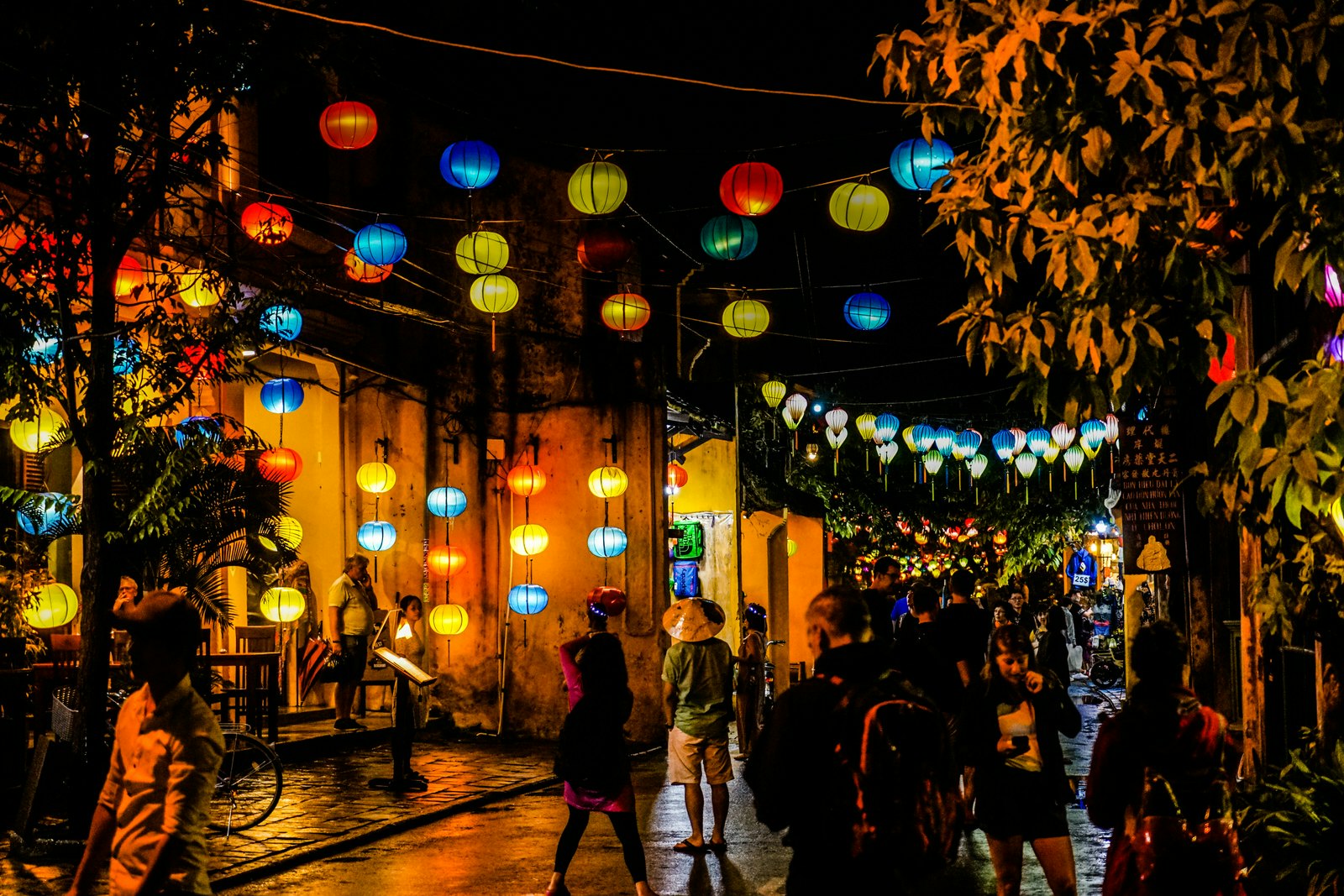
Absorb the warm glow of the Old Town in the cool evening
Yes, the narrow streets of Hoi An’s Old Town are lined with boutiques and cafes and resemble an outdoor mall for much of the day. But there’s something about the historic shophouses with their clay-tiled roofs and ochre-coloured walls that remain timeless. For a better experience, try visiting in the early morning when the market is populated mainly with locals, or in the cool of the evening, when the town takes on a lantern-lit glow. This particularly special on the 14th day of each lunar month when the Old Town turns off its electric lights and is lit solely by colourful lanterns for the Full Moon Festival.
Take a deep breath at the atmospheric fish markets
If you can stomach the smell of fish before breakfast, head to one of Hoi An’s two fish markets – Duy Hai (near where the Thu Bon River empties out into the sea) or Thanh Ha (near the pottery village). Watch as fishing boats return in the early morning hours, offloading their catch which is quickly sorted and sold. The atmosphere is bustling and all the activity in the early morning light is a photographer’s dream.
Browse the Night Market
If you thought Hoi An was touristy by day, just wait until you see its Night Market. It's a raucous, crowded, 300m stretch of Nguyen Hoang Street, loaded with vendors selling everything from snacks and trinkets to paper cut-out cards and silk ties. The lantern shops make for particularly nice photo backdrops.

Cycle round Cam Kim Island
Just across the Thu Bon River from Hoi An is Cam Kim Island with its rural scenes of rice paddies and family shrines. The star of the island is arguably Kim Bong village, famous for its many carpentry shops. Wander the workshops and watch artisans working with wood in all shapes and sizes, from hand-carving wooden statues and meticulously inlaying mother-of-pearl to making furniture and building ships. You can cycle the 9km distance on your own, taking the Cam Kim Bridge towards the southwest of town, or join a Hoi An Free Tour, led by enthusiastic English-speaking university students. The tour is free, however, visitors are asked to contribute VND 50,000 towards the ferry ride and a small donation to the community.
Visit the workshop at Reaching Out
If you can’t get out to one of the single-craft villages around Hoi An, stop by the small workshop at the back of Reaching Out where you’ll find artisans (many of them people with disabilities) crafting everything from silver jewellery to intricate embroidery. Book a free tour on the website or just wander around the small workshop on your own.

Visit the Precious Heritage Museum
French photographer Réhahn has spent the better part of a decade documenting nearly all of Vietnam’s 54 ethnic minority groups, some with fewer than 10 people still able to speak the language. The result is the Precious Heritage Museum showcasing beautiful portraits and costumes from around the country.
Explore Cam Nam Island
Just across the Cam Nam Bridge from Hoi An, the river island of Cam Nam is a quiet place to cycle. Locals flock to the island in the evenings for its famed clam dishes, but its coconut palm-fringed waterways and many cottage industries make for an equally interesting backdrop. Head to the harbour at the end of the island and watch the fishing boats come in at the end of the day.
Seek out the crucial component of cao lau at Ba Le Well
Hoi An’s most famous dish is cao lau noodles, which gets its distinctively chewy texture from soaking rice in lye water originally procured from the Ba Le Well (which explains why it’s practically impossible to find outside of Hoi An). Strictly for hardcore foodies, visit the unassuming Ba Le Well to see where this famous dish got its start.
Watch artisans at Thanh Ha pottery village
About 5km east of Hoi An is the single-craft pottery village of Thanh Ha. Originally established to provide clay roof tiles and other ceramic and pottery needs of the town, the village still churns out hand-thrown pottery, though much of it is now mainly for decoration. Watch as artisans form vases and bowls using a foot-powered potter’s wheel, and look for Mrs Phu, now well into her 90s who can still throw a mean lump of clay.
Enjoy the countryside by Tra Que vegetable village
Most of the flavourful herbs that accompany many of Hoi An’s dishes come from the village of Tra Que. Situated between the town and the beach, the village is famous for its organic herbs and vegetables, fertilised using locally-sourced seaweed instead of chemicals. Walk the neat rows and watch farmers working the fields by hand. Also look out for the scarecrows dressed in conical hats. While you’re in the area, cycle the surrounding paths through the beautiful Hoi An countryside dotted with lush rice paddies, inquisitive water buffalo, and ponds stocked with shrimp and fish.
Need more inspiration? Enjoy one or more of these great day trips from Hoi An.










